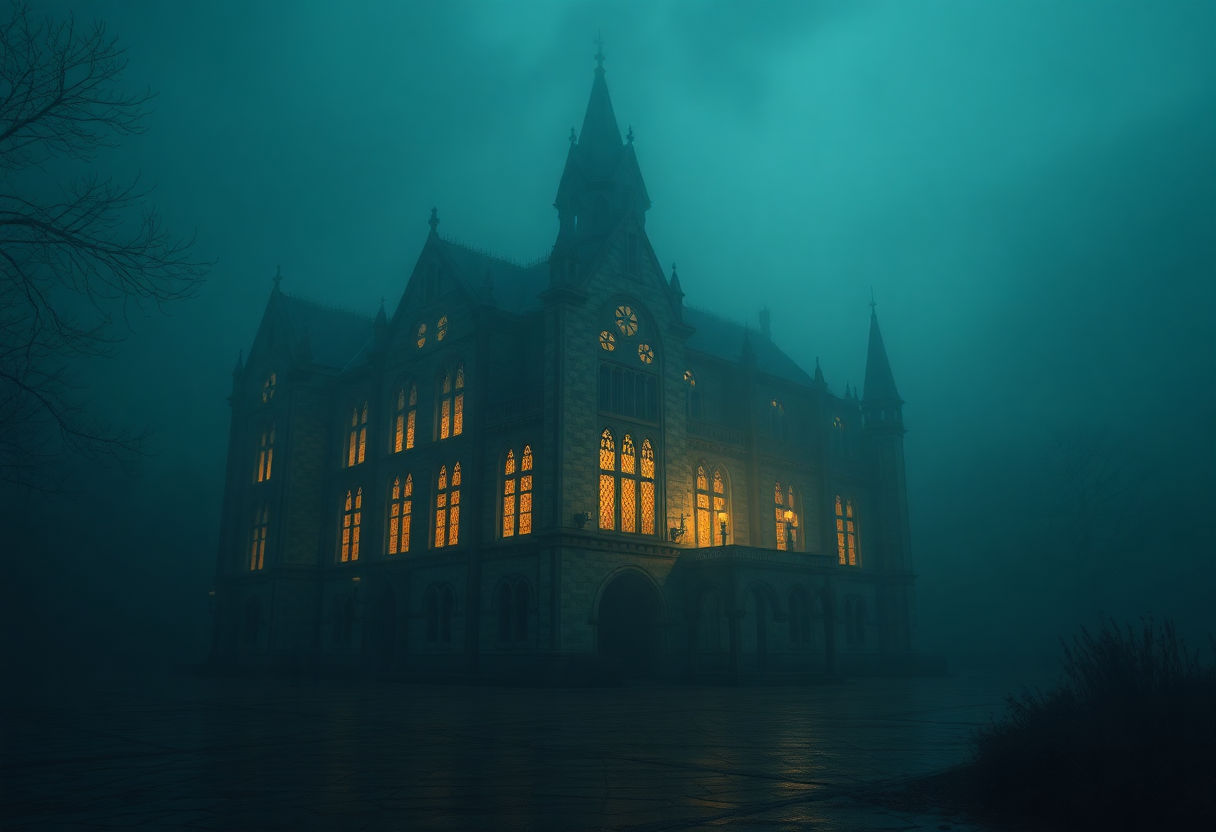In the enchanting realm of fantasy literature, the fusion of sapphic themes and dark academia offers a rich, nuanced tapestry that captivates readers. This literary niche intertwines the gothic allure of academia with powerful narratives of love and identity, providing an evocative exploration of both setting and character. By delving into the origins of dark academia and the rise of sapphic representation, this article illuminates how atmosphere, character development, and societal impact converge in this genre. From notable works and themes to its cultural significance, this discussion invites readers to unravel the allure and complexity of sapphic dark academia fantasy.
Key Takeaways
- Sapphic dark academia fantasy combines intricate themes of identity and romance within the atmospheric backdrops characteristic of dark academia.
- This genre offers nuanced sapphic representation, enriching modern literature with diverse and powerful narratives.
- Notable works and authors in sapphic dark academia are gaining recognition for their contributions to both the fantasy and LGBTQ+ literature realms.
- Common themes include introspection, intellectualism, and forbidden love, which are explored through complex plotlines and moody settings.
- The cultural impact of this genre is significant, fostering a deeper understanding of diverse identities and fueling important conversations around inclusivity in literature.
Origins of Dark Academia

The dark academia genre, with its roots deeply embedded in the halls of prestigious institutions, emerged as a subculture in the early 2010s. Originating primarily through visual platforms like Tumblr and Pinterest, it captured the imagination of countless enthusiasts drawn to its unique embrace of academic rigor infused with gothic aesthetics. This genre celebrates a world where intellectual pursuit and aesthetic beauty harmonize with a sense of melancholy, mystery, and introspection.
Key characteristics defining dark academia include an appreciation for classical literature, historical settings, and the exploration of existential themes. It draws inspiration from iconic literary works and philosophical discourses that dwell on the human condition, mortality, and the pursuit of knowledge. The ambiance is often set in historic libraries, ivy-clad campuses, and dimly lit study rooms, evoking nostalgia for a bygone era of intellectual elegance.
Dark academia’s literary landscape is vast, with narratives frequently revolving around complex characters who wrestle with inner turmoil, ethical dilemmas, and the quest for identity. The allure of this genre lies in its ability to weave tales that are both intellectually stimulating and emotionally compelling. These stories often possess a seductive darkness, where characters find themselves caught between societal expectations and personal aspirations.
The genre has steadily proliferated across various media, influencing fashion, music, and broader cultural conversations. Its blend of antique charm and modern angst creates a timeless appeal, capturing a spectrum of audiences who find solace and fascination in its shadowed corners. As dark academia continues to evolve, its nuanced portrayal of intellectual and emotional depths remains a cornerstone of its enduring fascination.
Sapphic Representation in Literature

The evolution of sapphic representation in literature has gained significant momentum, carving a niche within the broad spectrum of fantasy. Historically marginalized, sapphic narratives have gradually emerged from the periphery, offering readers nuanced portrayals of female relationships and experiences. In the realm of dark academia fantasy, these narratives blend the intrigue of intellectual subversion with the authenticity of same-sex love stories, making them compelling and relevant to contemporary audiences.
One of the pivotal aspects of sapphic narratives is their subversion of traditional tropes. Instead of adhering to heteronormative patterns, these works often focus on authenticity and depth, exploring themes such as identity, belonging, and self-discovery. In the context of dark academia, this convergence creates an ethos of mystery and introspection, defying the constraints of conventional storytelling.
The rise of sapphic themes in literature also reflects broader societal shifts. As modern readership becomes more diverse and inclusive, there is an increasing demand for stories that resonate with non-traditional perspectives. This shift has propelled more authors to explore sapphic narratives in their work, eschewing simplistic stereotypes in favor of complex, multidimensional characters.
Moreover, sapphic dark academia fantasy often highlights the intersection of intellectual pursuit with emotional depth, creating a rich tapestry of narratives that challenge social norms. This genre not only celebrates the uniqueness of sapphic experiences but also positions them within a broader, intellectually stimulating framework, offering readers both emotional depth and critical engagement with cultural themes.
Famous Works in Sapphic Dark Academia
In the niche yet burgeoning world of sapphic dark academia fantasy, several works stand out as exemplary, blending gothic aesthetic with masterful narratives of queer love and intellectual rigor. These notable titles highlight both the allure of the genre and the richness of its themes.
One standout is The Secret History by Donna Tartt, which, while not overtly sapphic, heavily influenced the genre, inspiring many subsequent works infused with queer narratives. Another pivotal work is Catherine House by Elisabeth Thomas, which fuses academic intrigue with a sapphic undercurrent, weaving a tale that captivates its readers through a blend of oppressive atmosphere and subtle romance.
Naomi Novik’s The Scholomance Trilogy offers another perspective with its subtle incorporation of sapphic elements amidst its magical academic setting. The friendships and complex relationships mirror the emotional depth characteristic of this genre.
Authors like Madeleine Miller, while primarily known for mythological retellings, have inspired a sapphic undertone in contemporary literary circles. Her narrative style has paved the way for others exploring queer romance in academic settings. In Carmilla, J. Sheridan Le Fanu provides an early exploration of sapphic themes within a gothic context, emphasizing the genre’s historical lineage.
These works collectively highlight how sapphic dark academia fantasy not only entertains but also reflects diverse identities and experiences, creating a tapestry rich in emotional and intellectual depth. Each tale invites the reader to immerse in worlds where academia and forbidden love intertwine, challenging norms and igniting imaginations.
Themes and Motifs
Sapphic dark academia fantasy is a literary niche distinguished by its exploration of intricate themes and motifs that resonate deeply with its audience.
Identity and Belonging: At the heart of many narratives is the quest for identity and belonging. Characters often grapple with their sexual orientation and societal expectations, set against the backdrop of an academic environment that is both nurturing and oppressive.
Intellectual Pursuit and Curiosity: The genre thrives on intellectual exploration, often depicting academia as a double-edged sword where knowledge and curiosity bring both enlightenment and peril. This reflects a broader journey of self-discovery, as characters navigate libraries, shadowy paths, and the eerie confines of ancient institutions.
Friendship and Rivalry: Sapphic dark academia frequently intertwines themes of friendship and rivalry, depicting intense relationships that offer both solace and challenge. Such dynamics elevate the narrative tension, as bonds formed under the weight of scholarly ambition can be as fragile as they are profound.
Mystery and Secrets: Enveloped in mystery and secrets, these tales often unravel hidden histories and enigmatic alliances. The protagonists are lured into solving puzzles that mirror their inner conflicts, often leading to moments of revelation and self-awareness.
Aesthetic Allure: The aesthetic of dark academia, with its emphasis on old-world charm, shadowy elegance, and an atmosphere steeped in history, enhances the exploration of these motifs. This visual and emotional landscape heightens the immersive experience, allowing readers to lose themselves in a world where every corner holds a potential story waiting to unfold.
Through these recurring themes, sapphic dark academia fantasy not only entertains but also invites readers to reflect on the complexities of identity, knowledge, and the human condition.
The Role of Atmosphere

In sapphic dark academia fantasy, the atmosphere is instrumental in crafting the genre’s distinctive allure. The ambiance often mirrors the inner complexities of the characters and the overall narrative, creating a symbiotic relationship between setting and story.
The backdrop frequently consists of gothic architecture, ancient libraries, and sprawling, dimly lit corridors, conjuring an evocative sense of mystery and nostalgia. Such environments not only enhance the narrative’s aesthetic but also serve as symbolic extensions of the characters’ inner worlds and conflicts. For instance, a decaying library might represent the fragility of forbidden knowledge or the weight of unfulfilled aspirations.
Key atmospheric elements include:
- Weather Conditions: Mists, storms, and chilly autumn air contribute to a moody and introspective setting.
- Lighting: Candlelit or dimly lit scenes evoke a sense of secrecy and the allure of the unknown.
- Soundscapes: The echo of footsteps in deserted hallways or the distant chime of an ancient clock can heighten tension and anticipation.
The atmosphere thus becomes a rich tapestry that engages readers’ senses while deepening the thematic complexity of the narrative. In this genre, where the past often collides with the present, the atmospheric elements underscore the tension between tradition and personal authenticity, resonating deeply with the core sapphic experience.
As the atmosphere intertwines with themes of introspection, redemption, and the pursuit of identity, it becomes an essential vehicle for exploring the multifaceted nature of passion, ambition, and forbidden love within sapphic dark academia fantasy.
Character Development and Interactions

In the realm of sapphic dark academia fantasy, character development serves as the backbone of engaging narratives, elevating them to a level of profound emotional resonance. These stories often explore intricate character arcs, charting a journey where protagonists grapple with internal and external conflicts amid a backdrop of academia’s shadowy allure.
The protagonists are frequently depicted as intellectual yet introspective individuals, whose identities are unfurling within the constraints of academic institutions that value tradition and secrecy. This environment offers a fertile ground for characters to evolve, struggling between the dichotomy of pursuing their true selves and adhering to societal expectations. The depth and complexity of their personal journeys reveal their vulnerabilities, triumphs, and transformative growth.
A defining feature of sapphic dark academia is the emphasis on intense interpersonal relationships. These are often portrayed through rich and layered connections, where love, rivalry, and friendship intertwine. The relationships are not merely an aspect of the narrative but are crucial in propelling the character development forward. They instigate pivotal moments of transformation, challenging the characters’ beliefs and ideals, thus redefining their paths.
Key to these narratives are themes of identity exploration and self-acceptance. Through their interactions, characters confront themes of loyalty, trust, and betrayal within their close-knit circles. The exploration of these complex dynamics adds depth to the storytelling, allowing readers to engage with characters on a deeply emotional level, fully immersing themselves in their experiences. This intricate tapestry of character evolution and relationships is what endows sapphic dark academia fantasy with a distinctive, compelling allure.
Societal Impact and Reader Engagement
In recent years, the intersection of sapphic narratives with dark academia has captivated the imagination of a diverse readership, significantly impacting societal perspectives on both queer representation and intellectual pursuits. This genre not only challenges traditional norms but reshapes how readers perceive identity and intellectualism at their confluence.
The cultural significance of sapphic dark academia is multifold. As it gains traction, it encourages a broader acceptance and celebration of LGBTQ+ identities. By weaving sapphic themes into the tapestry of dark academia, these narratives create a platform where queer voices can flourish amidst the evocative settings of academia and intellectual quests. Such literature often prompts readers to reconsider preconceived notions of both genre boundaries and gender identity, sparking conversations that extend beyond the pages.
Through its introspective nature, this genre creates a deep engagement with its readers. It invites them to explore nuanced characters whose relationships and personal growth often mirror the complexities of real-world dynamics. This connection fosters an emotional investment that transcends the conventional reader-author interaction, making the narrative a shared experience.
Moreover, the depiction of historically marginalized voices within the context of intellectual environments underscores the potential for diverse narratives to influence cultural dialogues. Readers find themselves reflecting on issues of belonging, identity, and the pursuit of knowledge in a way that is both personal and universally relevant.
In summary, the allure of sapphic dark academia fantasy lies not only in its atmospheric storytelling but also in its ability to engage readers with pressing societal themes, thus marking its indelible influence on contemporary literature.
Challenges and Criticisms

The development of sapphic dark academia fantasy has not been without its challenges and criticisms. An intricate genre that fuses historical academic settings with sapphic narratives, it faces scrutiny from both traditional academic circles and progressive communities.
Critics often argue that the genre can perpetuate an unrealistic portrayal of academic life. While romanticizing the aesthetic allure of ivy-covered universities and candle-lit libraries, some assert that it glosses over the more mundane or harsh realities of academia. This romanticization might contribute to an exclusionary world that feels inaccessible to some readers.
Moreover, the genre’s intersection with sapphic themes evokes discussions about representation. Critics have raised concerns that not all portrayals are authentic or nuanced, occasionally devolving into clichés. It’s crucial that authors strive to craft sapphic characters with depth and complexity, avoiding tokenism that can undercut their authenticity.
Additionally, there’s a balancing act between embracing historical accuracy and acknowledging the prejudices of the past. Writers often walk a tightrope, striving to create inclusive narratives within settings traditionally resistant to diversity. The risk remains that either historical authenticity might suffer or that contemporary readers may perceive historical elements as an endorsement of past inequities.
Furthermore, the genre faces commercial challenges as publishers navigate market demand and representation expectations. While interest in diverse narratives grows, some gatekeepers remain hesitant to fully embrace stories that diverge from mainstream formulas, impacting their dissemination and acceptance.
In conclusion, while sapphic dark academia fantasy captivates with its unique blend of atmosphere and narrative, it must continuously evolve to address these criticisms, ensuring stories are both inclusive and engaging.
Conclusion
The enchantment of sapphic dark academia fantasy lies in its intricate blend of evocative ambiance, profound character development, and vibrant sapphic narratives. As this genre continues to captivate audiences, its influence on cultural and literary landscapes becomes increasingly significant. With its rich themes and immersive settings, it promises to expand its horizons, inviting readers into its alluring world. For enthusiasts and newcomers alike, exploring this genre offers a unique opportunity to engage with transformative stories that challenge conventions and celebrate diversity. The future of sapphic dark academia fantasy is bright, with endless possibilities for storytelling innovation.
Frequently Asked Questions
What is sapphic dark academia fantasy?
Sapphic dark academia fantasy is a subgenre that combines romantic or platonic relationships between women with the aesthetic and thematic elements of dark academia. It typically features intellectual settings, such as universities or libraries, infused with gothic or mysterious atmospheres.
Why is sapphic representation important in dark academia?
Sapphic representation offers an inclusive narrative that reflects the diversity of real-world relationships, providing visibility to marginalized voices. It enriches the genre by introducing new perspectives and fostering empathy among readers.
Can you recommend a starting point for readers new to this genre?
Notable works like “The Priory of the Orange Tree” by Samantha Shannon and “Catherine House” by Elisabeth Thomas are excellent starting points. These novels blend sapphic themes with a dark academia setting, offering a captivating introduction to the genre.
How does dark academia typically influence the themes found in sapphic narratives?
Dark academia often explores themes of existentialism, identity, and secrecy, which harmonize with the introspective and sometimes forbidden nature of sapphic relationships. This synergy enhances the complexity and depth of the narratives.
What makes the ambiance so important in sapphic dark academia fantasy?
The ambiance plays a crucial role by setting a mysterious and immersive tone that underscores the intellectual and emotional depth of the characters’ journeys. A well-crafted atmosphere can elevate the tension and intrigue, making the story more compelling.



